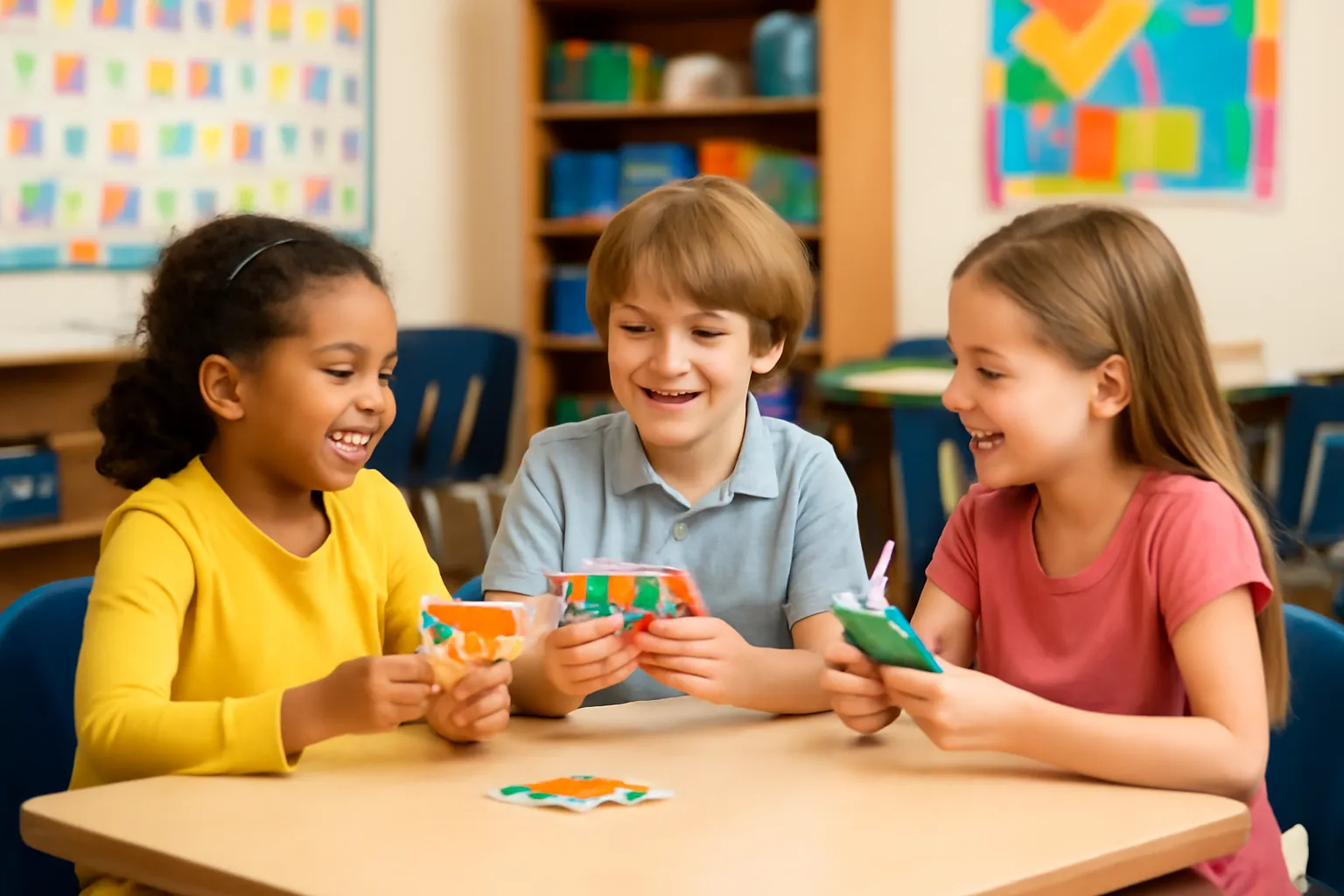Looking for engaging and educational play activities for elementary school students? Discover the best options that combine fun with learning!
Elementary school years are a time of significant cognitive, emotional, and physical growth. It’s essential to engage young learners in play that is not only enjoyable but also educational. Activities designed for elementary school students can support their development in various ways, from enhancing social skills to improving problem-solving abilities. In this article, we’ll explore recommended play activities and programs tailored specifically for children in elementary school, helping both parents and teachers foster a stimulating environment.
1. Elementary School Student Play: A Key to Development
Play is more than just fun for elementary school students; it’s a vital part of their development. It’s during these early years that children begin to develop social skills, creativity, problem-solving abilities, and a sense of teamwork. Play activities provide the opportunity for students to experiment with new concepts in a safe and enjoyable setting, facilitating learning that is both meaningful and lasting.
Types of Play for Development
There are many types of play activities that can benefit elementary school students:
-
Interactive Games – Games like “Simon Says,” board games, or simple tag promote physical activity and social interaction.
-
Creative Play – Arts and crafts, storytelling, or role-playing allow children to express their creativity and imagination.
-
Educational Play – Puzzle games, memory games, or trivia-based activities help develop cognitive skills and foster a love for learning.
-
Collaborative Play – Group activities, such as building something together with blocks or a team sport, promote teamwork and communication.
-
Outdoor Play – Engaging in outdoor games like hide-and-seek, obstacle courses, or scavenger hunts not only keeps children active but also strengthens their connection with nature.
By incorporating various types of play, children develop a wide range of skills that go beyond just fun. Play helps in building essential life skills such as cooperation, empathy, patience, and adaptability.
👉 Discover more fun learning games for kids! 👈
2. Recommended Programs for Elementary School Students
When considering structured play activities for elementary school students, it’s important to look for programs that are both enjoyable and educational. These programs can range from school-based initiatives to extracurricular activities outside of school hours. Here are some recommended programs that promote learning while having fun:
1. STEM Programs
STEM (Science, Technology, Engineering, and Math) programs are designed to foster curiosity and critical thinking in young learners. These programs often involve hands-on projects that encourage children to problem-solve and collaborate.
-
Robotics Clubs – Students can work together to build robots and solve challenges, stimulating their interest in technology.
-
Science Experiments – Fun, safe, and interactive science experiments can teach children about the world around them in an engaging way.
-
Engineering Challenges – Activities like building bridges out of popsicle sticks or creating marble runs can spark an interest in engineering concepts.
2. Art and Drama Programs
Art and drama programs offer children the opportunity to express themselves creatively and develop important emotional and social skills. Whether through painting, drawing, or performing in a play, these activities boost self-esteem and encourage communication.
-
Theater Productions – Children can participate in school plays, where they practice teamwork, communication, and self-expression.
-
Art Classes – Painting, clay modeling, and other art forms allow students to tap into their creativity and problem-solving abilities.
3. Physical Education and Sports Programs
Physical activity is crucial for young children to develop motor skills, coordination, and teamwork. Sports programs help foster a love of fitness while encouraging positive social interaction.
-
Team Sports – Soccer, basketball, and volleyball teach children how to work as part of a team and improve their physical coordination.
-
Individual Sports – Swimming, gymnastics, and martial arts programs help build confidence and focus in children.
By participating in these programs, children not only stay active but also develop skills like perseverance, leadership, and resilience.
👉 Find the best extracurricular activities for kids! 👈
3. Creating the Ideal Elementary School Playroom
An elementary school playroom is a designated space where students can engage in free and guided play. A well-designed playroom encourages children to explore, learn, and grow. It should be equipped with a variety of resources and materials that promote creativity and learning.
Key Features of a Good Playroom
Here are some of the essential elements that should be included in an elementary school playroom:
-
Varied Learning Materials – A mix of books, puzzles, games, art supplies, and educational tools should be available to stimulate children’s minds.
-
Interactive Spaces – Zones for building (e.g., LEGO tables), art stations, and quiet reading areas ensure that students have access to a range of activities.
-
Inclusive Design – The space should be welcoming to all students, with materials that cater to different learning styles and abilities.
-
Comfortable Furniture – Child-sized tables, chairs, and soft seating areas create a cozy environment for play and learning.
-
Safe and Accessible – The room should be safe for children to move around and explore, with materials organized in a way that encourages independence.
A thoughtfully designed playroom allows students to use their imagination and creativity, developing essential life skills in the process.
👉 Explore great playroom design ideas for schools! 👈
Conclusion
Play is a cornerstone of childhood development, and for elementary school students, it’s crucial to provide activities and environments that support growth in both fun and educational ways. By incorporating a variety of play types, structured programs, and well-designed spaces, schools and parents can ensure that students have the opportunity to thrive both socially and academically.
Remember, play is not just about having fun—it’s about learning, growing, and developing essential skills that will benefit children throughout their lives. As Albert Einstein once said, “Play is the highest form of research,” and indeed, the lessons learned through play will continue to resonate with students long after they’ve grown.






